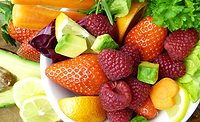EWG Publishes 2024 Dirty Dozen List of Produce Most Contaminated With Pesticides

Image credit: Call Me Fred via Unsplash
The Environmental Working Group (EWG) has published its Dirty Dozen list for 2024, describing the 12 fruits and vegetables most contaminated with pesticide residues, based on analysis of testing data from the U.S. Department of Agriculture (USDA) and the U.S. Food and Drug Administration (FDA). Alongside the Dirty Dozen, EWG also published its Clean Fifteen list, which contains the 15 commodities with the lowest amounts of pesticide residue.
Data used for the 2024 guide was drawn from 47,510 samples of 46 fruits and vegetables.
EWG’s analysis showed fungicides to be four of the five most frequently detected chemicals in fruit and vegetables: fludioxonil, pyraclostrobin, boscalid, and pyrimethanil. Moreover, fludioxonil and pyrimethanil show up in the highest average concentrations of any pesticides found on the Dirty Dozen. Both fungicides may be endocrine disruptors with the potential to harm the male reproductive system.
Overall, EWG found that 75 percent of all conventional fresh produce sampled had residues of potentially harmful pesticides. But for items on the Dirty Dozen, 95 percent of samples contained pesticides. Of the 46 foods included in EWG’s analysis, the following were the most contaminated, and are known as the Dirty Dozen:
- Strawberries
- Spinach
- Kale, collard, and mustard greens
- Grapes
- Peaches
- Pears
- Nectarines
- Apples
- Bell and hot peppers
- Cherries
- Blueberries
- Green beans.
On the other hand, almost 65 percent of EWG’s 2024 Clean Fifteen fruit and vegetable samples had no detectable pesticide residues. The Clean Fifteen is made up of:
- Avocados
- Sweet corn
- Pineapple
- Onions
- Papaya
- Asparagus
- Honeydew melon
- Kiwi
- Cabbage
- Watermelon
- Mushrooms
- Mangoes
- Sweet potatoes
- Carrots.
EWG recommends consumers seeking fresh produce with low pesticide residues buy organic versions of items on EWG’s Dirty Dozen, and either organic or conventional versions of produce on the Clean Fifteen.
Some industry stakeholder groups raise issue with EWG’s Dirty Dozen list, calling it scientifically unsupported and raising issue with its consumer impact. The Alliance for Food and Farming cite studies suggesting that the levels of pesticides present in conventionally grown produce are so low that substitution with organic produce does not decrease risk. The group underlines that the health benefits of consuming more produce outweigh the risks of pesticide exposure, and that washing produce can be effective in reducing or eliminating pesticide residues that are present.
Looking for a reprint of this article?
From high-res PDFs to custom plaques, order your copy today!





